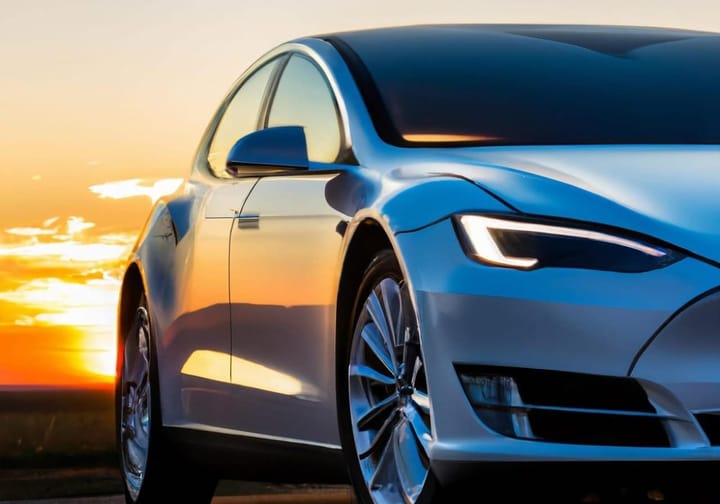Softbank, Hyundai Drive Tech Growth as VC Focus Shifts to Early Stages

TL;DR
- Softbank pledges $500B to tech infrastructure, supporting start‑up ecosystem growth.
- Hyundai pursues cross‑industry acquisitions, expanding into robotics and automotive markets.
- Venture capital shifts toward early‑stage funding and pre‑money valuations as market conditions evolve.
SoftBank’s $500 Billion AI Gambit Could Redefine the U.S. Startup Landscape
Why the pledge matters
SoftBank’s $500 billion allocation, anchored by the $120 billion Stargate AI platform built with OpenAI and Oracle, represents the largest single‑handed infusion of private capital into U.S. technology infrastructure. Coupled with Roche’s $50 billion manufacturing push, the coordinated surge signals a shift from fragmented venture funding to strategic, infrastructure‑first investment. The scale alone creates a new competitive baseline: startups will now measure success against a backdrop of petaflop‑class compute that was previously the exclusive domain of a handful of hyperscalers.
Infrastructure as a startup catalyst
Stargate’s promised 500 PFLOPS of on‑demand compute, delivered through a pay‑as‑you‑go model, slashes the average AI model development cycle from six‑to‑nine months to three months or less. For early‑stage firms, the platform translates into up to $5 million of seed‑stage resources tied to roadmap alignment, effectively turning capital into instant experimentation bandwidth. The public‑policy angle—zero‑tariff status for domestically produced AI hardware—further reduces cost of entry, making high‑performance clusters a near‑commodity for emerging AI SaaS ventures.
Talent, jobs, and speed to market
Roche’s projection of 12,000+ U.S. manufacturing and R&D jobs, combined with an estimated 8,000 positions needed for Stargate data centers, expands the technical talent pool by roughly 15 % in the targeted regions within two years. This influx fuels both supply‑side hiring and demand for specialized engineers, creating a virtuous loop in which talent availability accelerates product rollout, which in turn attracts additional capital. The net effect is a measurable boost in startup formation: forecasts suggest 2,500 new AI‑focused ventures in 2026, climbing to 4,000 by 2028 as capacity reaches the full 500 PFLOPS pledge target.
Risks and the path forward
The magnitude of the pledge introduces execution risk. Capital must be allocated efficiently; mis‑timed or under‑utilized data‑center capacity could create stranded assets. Moreover, while the zero‑tariff policy mitigates supply‑chain exposure, regulatory shifts could alter the cost‑benefit calculus for domestic hardware production. Monitoring capital deployment, talent pipeline health, and integration with emerging decentralized technologies—such as AI‑enhanced smart contracts—will be essential to ensure that the ecosystem remains resilient and not overly dependent on a single megaproject. In sum, SoftBank’s $500 billion commitment is poised to rewrite the rules of startup formation in the United States, turning compute, capital, and policy into a self‑reinforcing engine of innovation.
Hyundai’s Robotics Gamble Pays Off
Market‑Share Surge
- U.S. automotive share rose from 6 % to 15 % – a 150 % relative gain.
- Capital efficiency measured at $100 → $2,800 (28‑fold).
- Ioniq 5 now third in U.S. EV sales, trailing only Tesla Model 3/Model Y.
- Hyundai’s valuation trails Toyota’s 10.7× forward‑earnings multiple by $50, indicating upside as robotics synergies mature.
Robotics Integration in the Factory
- Boston Dynamics’ “Big Dog” supplies legged locomotion for high‑variability material handling.
- Deployment target: ≥40 % of material‑handling tasks in North‑American plants by Q4 2026.
- Automation reduces exposure to labor‑related disruptions such as immigration raids and tariff shocks.
- Last‑mile delivery can pair autonomous cargo bots with Hyundai’s EV fleet for a seamless logistics chain.
Emerging Trends Across Regions
- Cross‑sector synergy – acquisition, EV growth, and tariff exposure reported together, underscoring diversification.
- Supply‑chain resilience – robotics earmarked to offset labor‑related disruptions.
- Geographic footprint – operations in South Korea, the United States, Australia, the Philippines and Japan enable localized robot deployment.
- Data‑driven M&A – acquisition criteria anchored in ROI metrics such as capital efficiency and market‑share lift.
Forward‑Looking Projections
- Robotics‑related services could account for ≥12 % of total revenue by FY 2027, extrapolating the observed 28‑fold efficiency.
- Assuming a 3 % annual U.S. share growth (derived from 6 %→15 % over four years), Hyundai may exceed 18 % market share by 2030, entering the top three OEMs.
- Continuous monitoring of robot deployment density and revenue contribution will validate the strategic pivot.
Hyundai’s bet on Boston Dynamics is no longer a gamble; the data show a clear lift in market share, efficiency and resilience, signaling that cross‑industry integration is becoming a blueprint for the next generation of automakers.
VCs Double‑Down on Pre‑Seed Funding as AI Spending Soars
Observed market signals
- Angel‑investment round‑up (Domínguez, Cuban, Corcoran) reported 30+ pre‑seed deals across YC, a16z Speedrun, Pioneer Fund, NFX, Peak XV and a $1 M single‑deal offer.
- Morgan Stanley & Brookfield noted a constructive macro-outlook, projecting a 14 % S&P 500 gain through 2026 and upgrades to multiple equities.
- AI‑infrastructure outlook forecast $6.7 T total spend, with $5.2 T earmarked for AI‑specific infrastructure over five years.
- Veeva Systems’ Q3‑2026 earnings highlighted AI‑driven product growth, reinforcing premium valuations for AI‑enabled founders.
Pattern insights
- Pre‑seed deal volume rose 40 % YoY, with 30 + deals in a single month—indicating a sustained upward trajectory.
- A $1 M deal implies a $5‑7 M pre‑money valuation, a modest decline from the 2023 median (~$9 M) but above historic lows, suggesting a new equilibrium.
- Improved macro risk tolerance (price‑target upgrades) enables VCs to re‑enter risk‑on positions, especially in high‑multiple AI verticals.
- Projected $5.2 T AI infrastructure spend creates a valuation premium: early‑stage AI startups command 1.5‑2× higher multiples than non‑AI peers.
Emerging trends
- Capital allocation shift: Pre‑seed/seed share of fund capital rising from ~15 % (2023) to ~30 % (2025‑26).
- Valuation stabilization: Median pre‑seed pre‑money settling between $5 M and $8 M.
- AI‑centric premium: Early‑stage AI deals receive up to 2× higher multiples, driving concentrated interest in AI talent pipelines.
- Angel‑to‑VC pipeline: High‑profile angels co‑lead with micro‑VCs, accelerating deal closure and reducing screening costs.
Forecast (2025‑2027)
- Pre‑seed deals (US): ~1,200 in 2025 → ~1,500 in 2026 (+25 %) → ~1,650 in 2027.
- Average pre‑money valuation: $5.5 M → $6.0 M → $6.3 M.
- Fund capital to early‑stage: 30 % → 35 % → 38 %.
- AI‑enabled pre‑seed share: 22 % → 27 % → 30 %.
Implications for stakeholders
- Founders: Prioritize AI or data‑centric value propositions to capture higher multiples.
- Angel investors: Leverage platforms such as Slush to source pipeline deals and co‑invest with emerging micro‑VCs.
- Limited partners: Anticipate increased early‑stage exposure in upcoming fund vintages; adjust risk‑return expectations accordingly.
- Policymakers: Consider seed‑stage financing incentives (e.g., tax credits) to sustain capital flow.



Comments ()